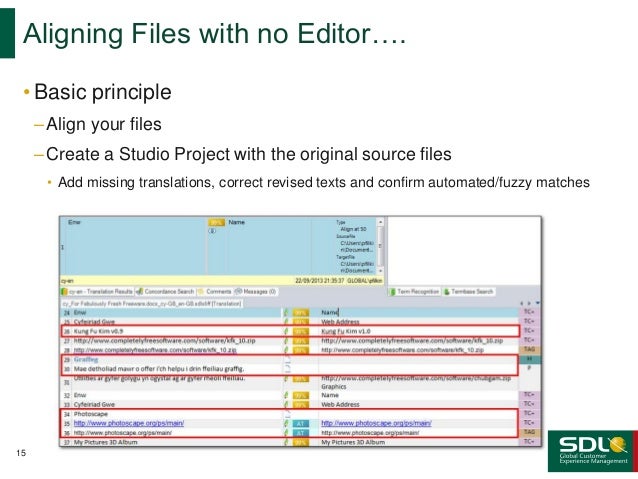

- Sdl trados studio 2017 getting started part 1 how to#
- Sdl trados studio 2017 getting started part 1 update#
- Sdl trados studio 2017 getting started part 1 full#
Sdl trados studio 2017 getting started part 1 how to#
Click on the “Getting Started” tab to access specific video tutorials and learn how to open a single file for translation, set up a new project or get started with Multiterm. When starting up Studio for the very first time, a complete newbie gets immediate help here. (I do wish it had been labelled “Multifarious” and not just a boring-sounding “Studio Blog”.) Anyway, labels apart, at last no one can complain that SDL’s help is hard to find. Not only does it contain the usual help topics (F1) but it also has some excellent links to take you straight to your SDL account, Knowledge Base articles, video tutorials and even to Paul Filkin’s blog. The Help Tab is displayed in all Studio views. Make sure you’re in the right project by checking the project name at the top of the screen. To change project settings, just click on the huge “Project Settings” icon under the Home Tab. To change your general settings, go to File Tab>Options.

With the ribbon it’s almost impossible to get confused between general Studio settings and project-specific settings.
Sdl trados studio 2017 getting started part 1 full#
Click on one of the icons to increase or decrease font size, or click the dialog box launcher (little arrow in the bottom right-hand corner, also known as “dinky”) to open up the full options for font adaptation. Now, when you’re looking for a zoom button, you’ll naturally go to the View Tab and spot the font adaptation icons on the far right. In the Editor View you’ll see tabs called File, Home, Review, Advanced, View, Add-Ins and Help. The tabs that are displayed will vary depending which view you’re in. The ribbon sorts everything you need in Studio into tabs. There are too many features to cover in a single blog post, so I thought I would look at some that will be useful for beginners here, and then follow up with another post on new features that may interest intermediate and advanced users. SDL Certification: This course provides all of the knowledge attendees need to pass their SDL Trados Studio 2017 Advanced exam.After many months of teasers, hints and glimpses, SDL Trados Studio 2014 is finally out! I’ve really enjoyed taking part in the beta testing phase, where a group of keen users work side by side with the developers to try out new features, identify bugs and discuss the changes. – how to increase translation speeds when translating MS Word documentsĬourse delivery mode: Hands-on and classroom based, delivered over 1 day Prerequisites: An understanding of the following functionality which may have been gained through training or by experience working with SDL Trados Studio 2017 – Project managers who have already attended the SDL Trados Studio 2017 for Project Managers Part 1 and Part 2 courses – Translators who have already attended either the SDL Trados Studio 2017 Getting Started Part 1 and Part 2 or Intermediate courses – identifying common localisation problems with automated pseudo-translation – processing bilingual legacy files (TTX, ITD, bilingual DOC)
Sdl trados studio 2017 getting started part 1 update#
– handling update projects and mid-projects updates through PerfectMatch – exporting translations to MS Word for review and automatically taking over any changes made during review into the project – reviewing translated documents and using track changes – enhanced workflows for different file types: Word, PowerPoint, Excel, InDesign

– customised automatic quality assurance rules – translation memory maintenance – keeping your TM resources lean and efficient Learning objectives: This course is designed for users who are already familiar with SDL Trados Studio 2017, and want to leverage the advanced product features to work even more efficiently and streamline their processes further.


 0 kommentar(er)
0 kommentar(er)
